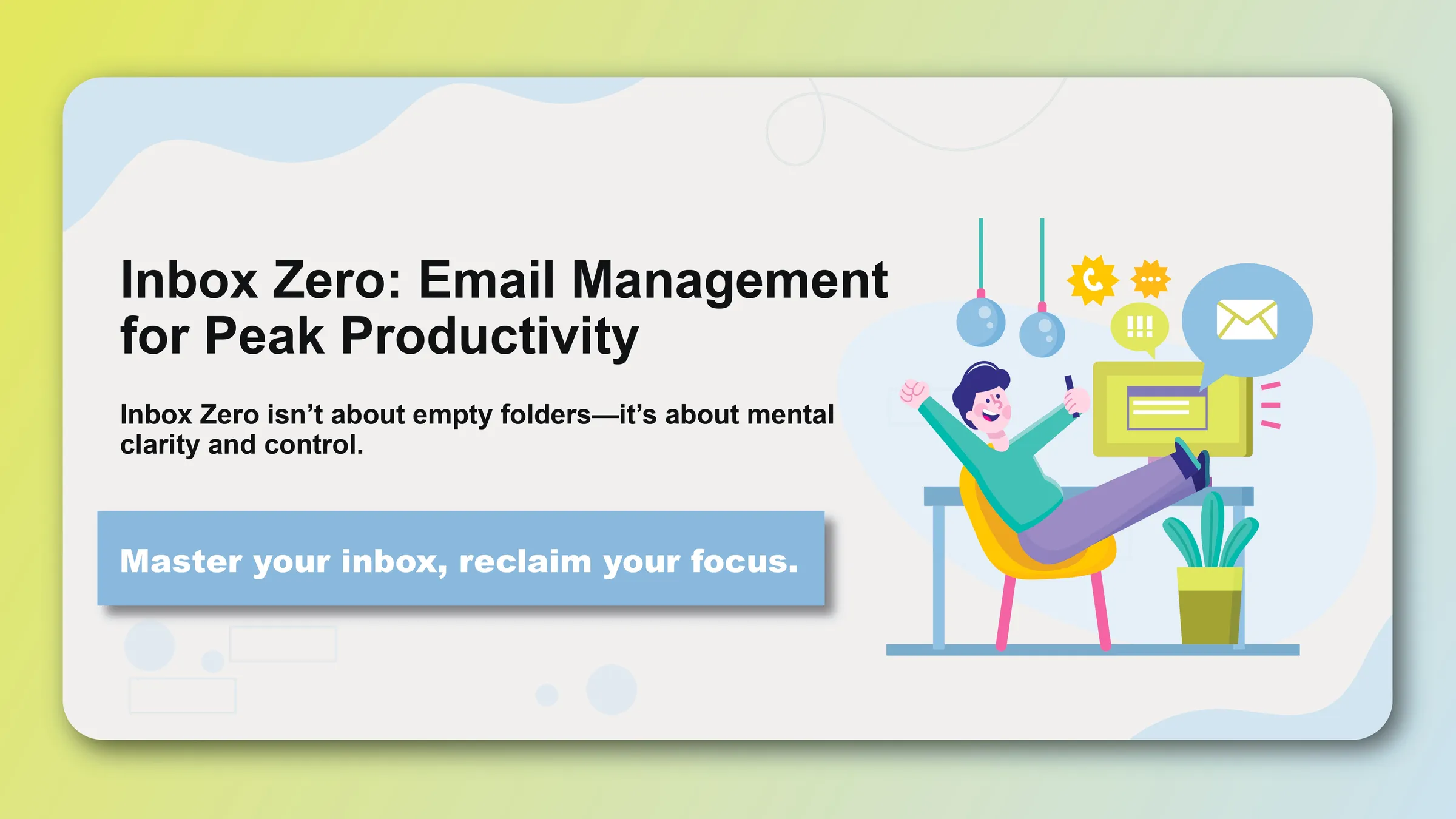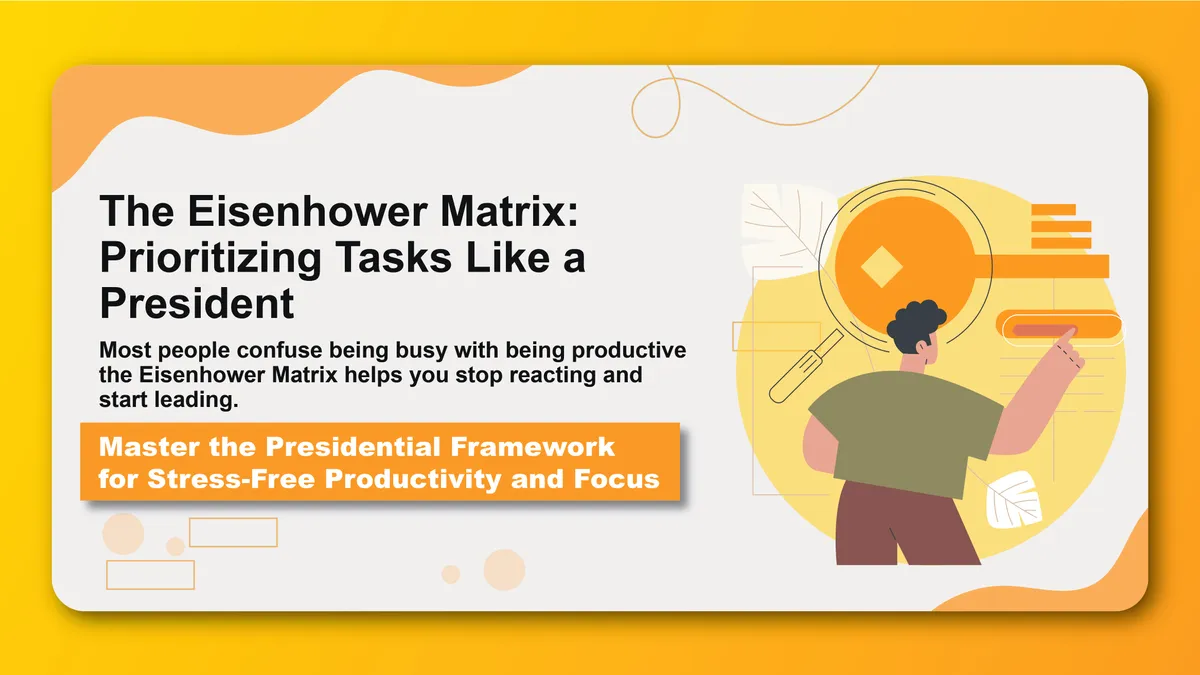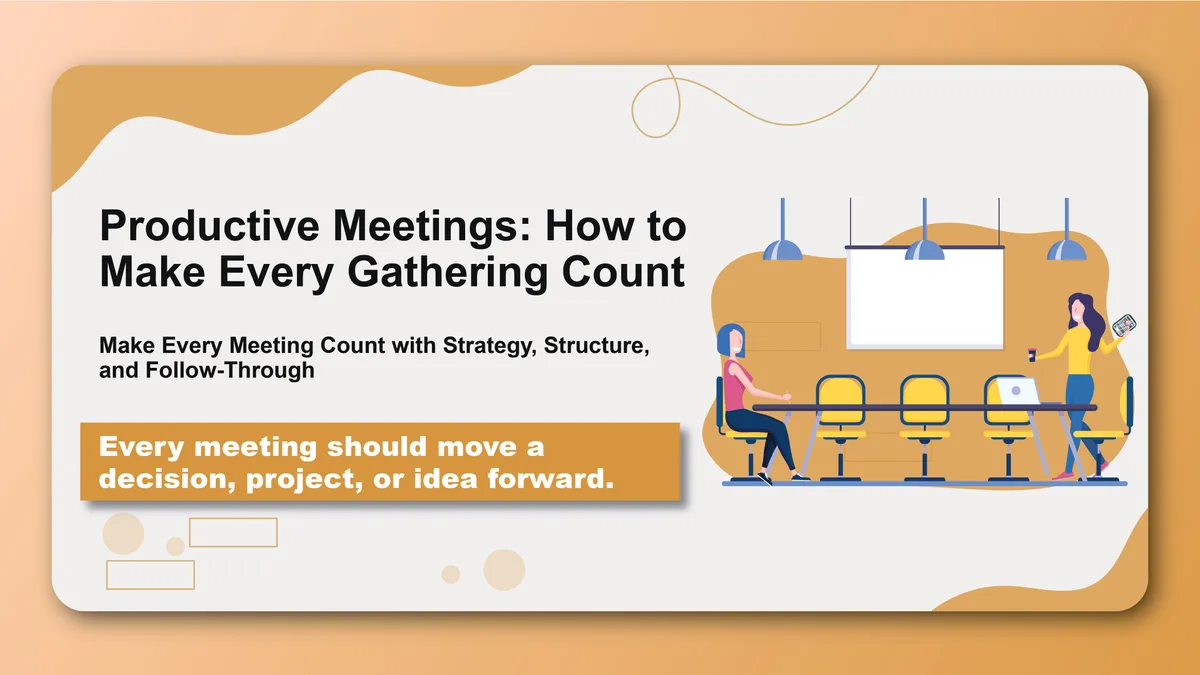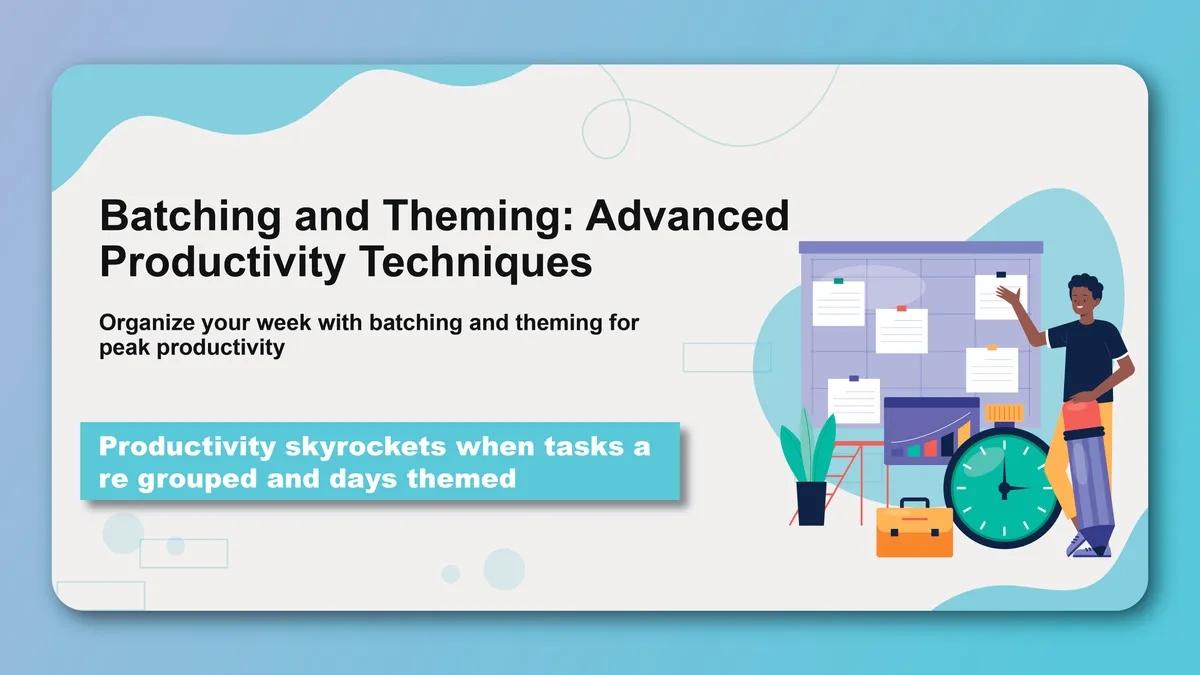Your email inbox is supposed to be a tool for communication, but for most people, it's become a source of constant stress, distraction, and overwhelm. The average knowledge worker receives 121 emails per day and spends 2.6 hours processing them. That's over 30% of the workday consumed by email management.
But what if you could process your emails in a fraction of that time while maintaining better communication and experiencing less stress? This is the promise of Inbox Zero—a methodology that transforms your relationship with email from reactive chaos to proactive control.
Inbox Zero isn't about having zero emails in your inbox (though that's often the result). It's about having zero unprocessed emails—a state where every message has been reviewed, categorized, and acted upon appropriately. It's about reclaiming your attention and mental clarity from the tyranny of the perpetually full inbox.
Understanding the Email Problem
The Psychological Impact of Email Overload
Mental Residue and Cognitive Load Every unread email creates what researchers call "attention residue"—a portion of your mental energy that remains focused on the unfinished task. A full inbox creates a constant cognitive load that reduces your ability to focus on other work.
The Stress Response Studies show that constant email checking triggers the same stress response as being chased by a tiger. Your brain interprets each new email as a potential threat, keeping you in a state of chronic stress and hypervigilance.
Decision Fatigue Each email requires multiple micro-decisions: Should I read this now? How should I respond? What priority should this receive? These decisions accumulate throughout the day, depleting your mental energy.
The Productivity Drain
Context Switching Costs Every time you check email, you're performing a context switch. Research shows it takes an average of 23 minutes to fully refocus after an interruption. If you check email every 12 minutes (the average), you never fully engage with your primary work.
Reactive vs. Proactive Work Email often puts you in reactive mode, responding to other people's priorities rather than advancing your own goals. This reactive stance can consume entire days without meaningful progress on important projects.
The Attention Trap The unpredictable nature of email creates an intermittent reinforcement schedule—the most addictive type of behavioral conditioning. This makes it nearly impossible to resist checking email "just one more time."
The Inbox Zero Philosophy
Core Principles
Process, Don't Check The fundamental shift in Inbox Zero is from checking email to processing email. Checking is passive and reactive; processing is active and intentional.
Touch It Once When you open an email, make a decision about it immediately. Don't read it, close it, and come back to it later. This principle eliminates the cognitive load of re-reading and re-evaluating messages.
Separate Processing from Doing Processing emails (deciding what to do with them) is different from doing the work they represent. Process all emails first, then do the work in batches.
Focus on Outcomes, Not Activity The goal isn't to spend less time on email—it's to achieve better communication outcomes with less mental effort and stress.
The Five Email Actions
Every email requires one of five actions:
- Delete - Remove irrelevant or low-value emails
- Delegate - Forward emails that others should handle
- Respond - Reply to emails that require a quick response (2 minutes or less)
- Defer - Schedule emails that require more time or thought
- Do - Take action on emails that require immediate attention
The Inbox Zero System
Phase 1: Email Bankruptcy (The Clean Slate)
The Nuclear Option If you have thousands of unread emails, consider declaring "email bankruptcy." Create a folder called "Old Emails" and move everything there. If something is truly important, people will follow up.
The Gradual Approach If bankruptcy feels too extreme, work backward through your emails. Start with the most recent and work toward older messages. Set a time limit (e.g., 2 hours) and process as many as possible.
The Triage Method Sort emails by sender and subject. Delete or archive obvious spam, newsletters, and automated messages in bulk. Focus your energy on emails from real people requiring real responses.
Phase 2: Setup and Organization
Folder Structure Create a simple folder system:
- Action Required - Emails that need your attention
- Waiting For - Emails where you're waiting for someone else's response
- Someday/Maybe - Emails that might be useful in the future
- Archive - Completed emails you want to keep
Email Rules and Filters Set up automatic rules to:
- Filter newsletters and automated emails to specific folders
- Automatically sort emails from specific senders
- Flag emails with certain keywords
- Forward certain types of emails to team members
Unsubscribe Ruthlessly Use the "unsubscribe" link on every newsletter and automated email you don't actively read. For persistent senders, use email filters to automatically delete their messages.
Phase 3: Daily Processing Routine
Batch Processing Instead of checking email constantly, process emails in dedicated batches:
- Morning: 15-20 minutes to process urgent emails
- Midday: 20-30 minutes for thorough processing
- End of day: 10-15 minutes to clear remaining emails
The 2-Minute Rule If an email can be responded to in 2 minutes or less, do it immediately. This prevents small tasks from accumulating and cluttering your action lists.
Time-Boxing Set specific time limits for email processing. This creates urgency and prevents you from spending too much time on low-value messages.
Advanced Inbox Zero Strategies
The PARA Method for Email
Projects - Emails related to current projects Areas - Emails related to ongoing responsibilities Resources - Emails containing useful information for future reference Archive - Completed emails and reference materials
Email Templates and Canned Responses
Common Response Templates
- Meeting requests
- Information requests
- Polite declines
- Follow-up reminders
- Project updates
Personalization Strategies Use templates as starting points but personalize each response. This maintains efficiency while preserving relationships.
The Email Dashboard
Priority Indicators Use flags, stars, or labels to indicate email priority:
- Red: Urgent and important
- Yellow: Important but not urgent
- Green: Quick actions or FYI
Status Tracking Create a system to track email status:
- New: Unprocessed emails
- In Progress: Emails being worked on
- Waiting: Emails awaiting responses
- Done: Completed emails
Communication Optimization
Subject Line Mastery
- Use specific, actionable subject lines
- Include deadlines and priority levels
- Use ACTION REQUIRED or FYI prefixes
- Update subject lines when topics change
Email Length Guidelines
- Keep emails under 5 sentences when possible
- Use bullet points for multiple items
- Put the most important information first
- Use clear calls to action
Dealing with Email Challenges
Challenge 1: High Email Volume
The Problem: Receiving too many emails to process effectively The Solution: Implement aggressive filtering and delegation
Strategies:
- Set up automatic rules to filter low-priority emails
- Train team members to handle routine inquiries
- Use auto-responders to set expectations
- Implement a "cc: reduction" policy
Challenge 2: Urgent vs. Important Confusion
The Problem: Treating all emails as equally urgent The Solution: Develop clear criteria for priority
Strategies:
- Define what constitutes a true emergency
- Use the Eisenhower Matrix for email prioritization
- Create separate processing workflows for different priority levels
- Train senders to indicate priority levels
Challenge 3: Perfectionism and Over-Processing
The Problem: Spending too much time crafting perfect responses The Solution: Accept "good enough" for routine communications
Strategies:
- Set time limits for email responses
- Use templates for common responses
- Practice writing concise, clear messages
- Focus on clarity over perfection
Challenge 4: Email Addiction and Compulsive Checking
The Problem: Feeling compelled to check email constantly The Solution: Create physical and digital boundaries
Strategies:
- Turn off email notifications
- Use website blockers during focused work time
- Practice delayed response (not everything needs immediate reply)
- Create email-free zones and times
Building Your Email Habits
Week 1: Foundation Building
Email Audit
- Count your current unread emails
- Identify your biggest email sources
- Track how often you check email
- Note your current response patterns
Basic Setup
- Create your folder structure
- Set up essential email rules
- Unsubscribe from unnecessary lists
- Turn off email notifications
Week 2: Processing Practice
Implement Batch Processing
- Schedule specific times for email processing
- Practice the 2-minute rule
- Use the five-action framework
- Track your processing time
Develop Templates
- Create templates for common responses
- Practice writing concise emails
- Implement subject line best practices
- Set up auto-responders
Week 3: System Refinement
Optimize Your Workflow
- Refine your folder structure
- Adjust batch processing times
- Optimize your email rules
- Practice rapid decision-making
Address Challenges
- Identify your biggest email challenges
- Develop specific strategies for problem emails
- Practice saying no to non-essential requests
- Build in flexibility for urgent matters
Week 4: Habit Integration
Make It Automatic
- Build email processing into your daily routine
- Create triggers for batch processing
- Develop accountability measures
- Celebrate your progress
Continuous Improvement
- Review and adjust your system
- Experiment with new techniques
- Track your email metrics
- Share your success with others
Tools and Technology
Email Clients and Features
Gmail Features
- Multiple inboxes
- Canned responses
- Email filters
- Priority inbox
- Snooze functionality
Outlook Features
- Rules and alerts
- Quick steps
- Focused inbox
- Email templates
- Categories and flags
Third-Party Tools
- Boomerang for email scheduling
- SaneBox for email filtering
- Mixmax for email tracking
- Unroll.Me for subscription management
Mobile Email Management
Smartphone Strategies
- Use mobile for quick responses only
- Set up VIP lists for important contacts
- Use voice-to-text for faster responses
- Limit mobile email checking to specific times
Tablet Optimization
- Use tablets for email processing and longer responses
- Set up split-screen for reference emails
- Use external keyboards for faster typing
- Optimize app settings for productivity
Measuring Inbox Zero Success
Quantitative Metrics
Email Volume
- Number of emails processed per day
- Time spent on email processing
- Response time to important emails
- Inbox size at end of day
Efficiency Metrics
- Time per email processed
- Number of emails requiring re-reading
- Percentage of emails processed in single session
- Number of email interruptions during focused work
Qualitative Indicators
Stress and Well-being
- Reduced anxiety about email
- Improved focus on important work
- Better work-life balance
- Increased sense of control
Communication Quality
- Clearer, more concise messages
- Faster response times to important emails
- Improved relationships with colleagues
- Better project coordination
The Long-term Benefits
Professional Benefits
Increased Productivity With email under control, you can focus on high-value work without constant interruptions.
Better Relationships Consistent, timely responses improve your professional relationships and reputation.
Enhanced Leadership Clear communication and responsiveness are key leadership skills that Inbox Zero helps develop.
Reduced Stress Eliminating email overwhelm reduces stress and improves overall job satisfaction.
Personal Benefits
Mental Clarity A clear inbox creates mental space for creative thinking and strategic planning.
Improved Focus Without email distractions, you can engage more deeply with important work.
Better Work-Life Balance Effective email management prevents work from bleeding into personal time.
Increased Confidence Mastering email management builds confidence in your ability to handle complex systems.
Your Inbox Zero Action Plan
Immediate Actions (This Week)
- Complete an email audit to understand your current situation
- Set up basic folders and email rules
- Unsubscribe from unnecessary email lists
- Turn off email notifications
Short-term Goals (Next Month)
- Implement batch email processing
- Develop templates for common responses
- Practice the five-action framework
- Achieve your first inbox zero day
Long-term Vision (Next Quarter)
- Maintain consistent inbox zero practice
- Optimize your email systems for maximum efficiency
- Help others implement inbox zero practices
- Integrate email management with broader productivity systems
Inbox Zero isn't just about email management—it's about reclaiming control over your attention and mental energy. When you master your inbox, you create space for deeper work, better relationships, and reduced stress.
Start with small changes, build the system gradually, and trust that consistent practice will transform your relationship with email. Your future self will thank you for the gift of a clear inbox and a focused mind.
Ready to achieve inbox zero and reclaim your productivity? Organize your tasks and communication systems with Habityzer and discover how email mastery can transform your work life.



